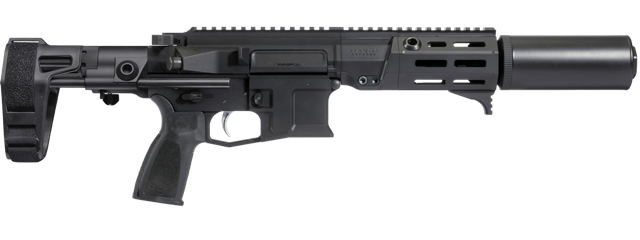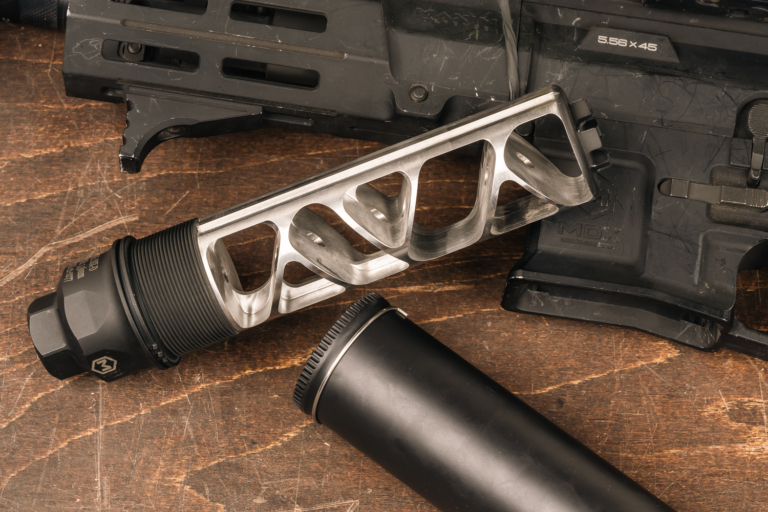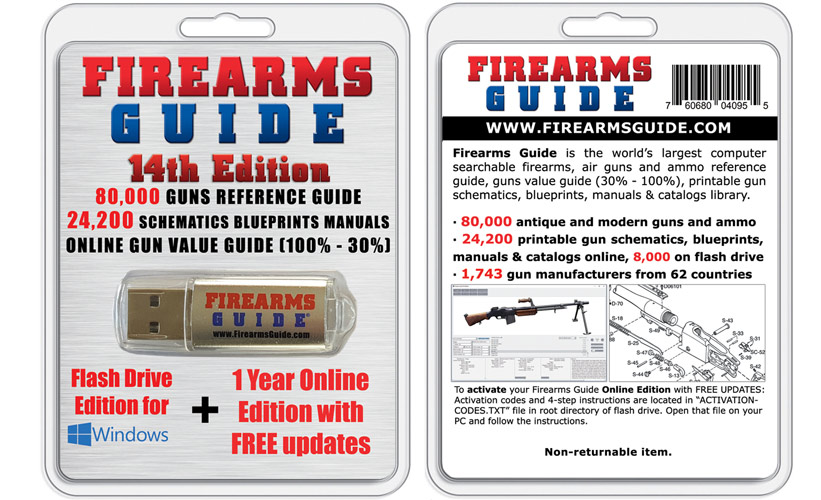Smaller, Lighter, Quieter: Inconel Suppressors from Thermal Defense Solutions
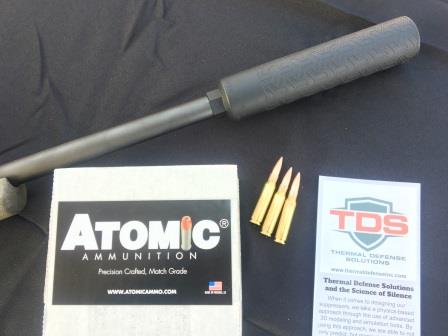
Thermal Defense Solutions makes the most technologically sophisticated suppressors on the planet. 3D printed from the advanced metal, Inconel 718, TDS’ cans are one piece super alloy full spectrum signature reduction systems.
I am not saying that the material and technologies were reverse engineered from alien space craft in Area 51, but that would explain a lot of mysteries. TDS’ methods and designs were produced by Oak Ridge National Laboratory (ORNL) in an exclusive license agreement. I like to think of it as a tax refund.
I was able to shoot the TDS suppressors at the Anteris Alliance range day. They were as cool and quiet as the claims. It is hard to be objective about suppressor noise, but using Atomic sub-sonic ammunition, they were truly hearing safe. After a firing a magazine, they were not to hot to touch.
The sophisticated internal architectures of these suppressors can only be built micron by micron using 3D printing, also known as additive manufacturing. Additive manufacturing is the process of joining materials to make objects from 3D model data, usually layer upon layer, as opposed to more subtractive manufacturing methodologies which start with a big block of metal and remove layers.
The entire suppressor is printed from powdered Inconel, a particularly wear and heat resistant nickel alloy. TDS uses a selective laser melting process producing a less porous finish. Additive Manufacturing is an efficient and effective process delivering far greater precision because it is printed directly from a CAD model.
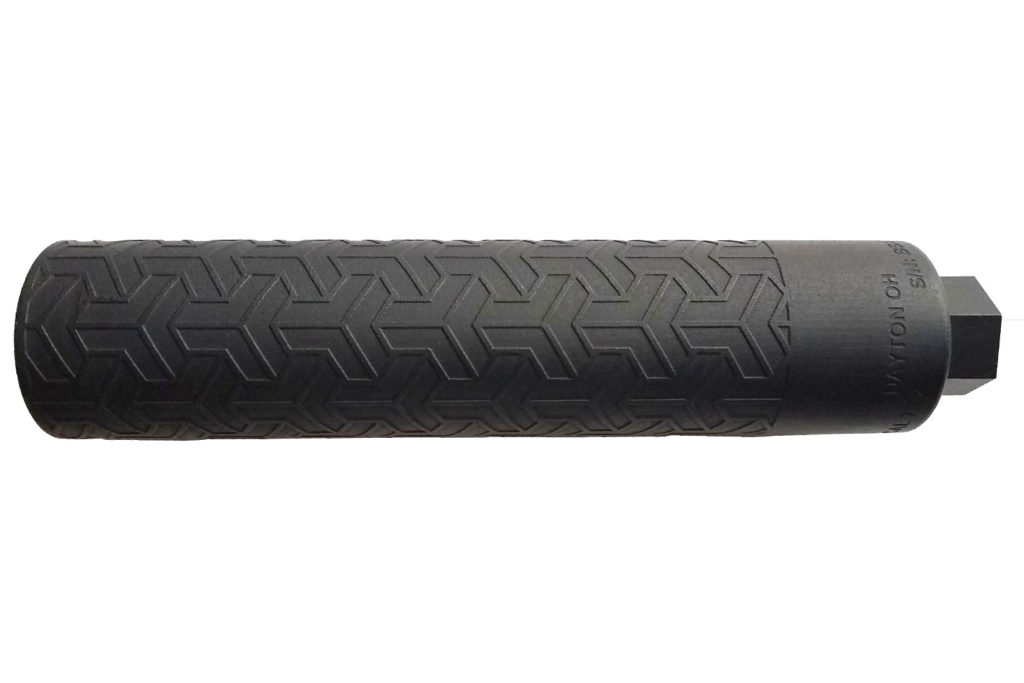
The shapes of the baffles are tested at Oak Ridge, TN using the same plasma and gas dynamics simulation technologies employed for nuclear projects.
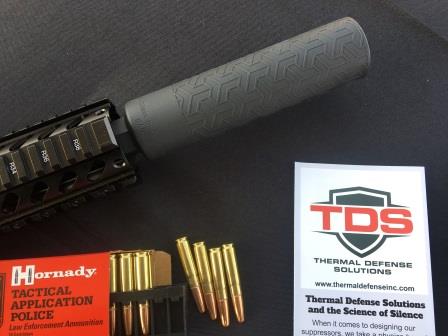
The STRIX from the start was designed with heavier/hotter powder loads in mind. With durable Inconel 718 construction, this suppressor will survive the toughest conditions and continue to perform, Long guns/bolt action rifles perform flawlessly with this suppressor, as it directs gasses out and away from shooter, while providing noise reduction unsurpassed in the industry. The STRIX is true 7.62 full auto rated suppressor.
The STRIX is shorter, lighter and quieter than any other centerfire rifle suppressor on the market. In addition to its performance, the STRIX’s design allows for maximum user adaptability and convenience. Each STRIX comes with a 5/8×24 or M18x1 direct thread mount, peel washer, and crush washer. The STRIX is rated for a range of ammunition from .22 Hornet to .300 Winchester Magnum.
The STRIX is rated down to:
- 10″ barrels for .223 Remington/5.56 NATO
- 16″ barrels for .308 Winchester/7.62 NATO
- 20″ barrels for .300 Win Mag.
Key Features:
- Lightweight
- Inconel construction
- Full auto rated
- forward gas release
- 60% thermal signature reduction
- $1099.00 MSRP
Specifications:
- Length: 8”
- Diameter: 1.68”
- Weight: 14oz.
- Thread Pattern: 5/8″-24 or M18x1
- Material: Inconel 718
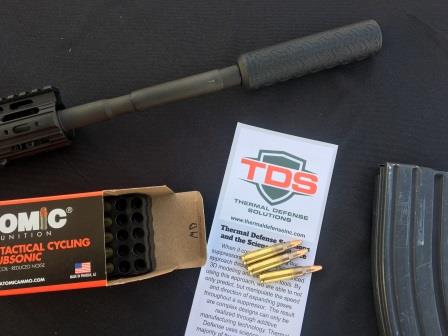
At a mere 6 ounces, the compact Bantam is big on suppression. 3D printed from Inconel 718, a high temperature nickel super alloy, this “micro” suppressor was designed specifically to work with 5.56×45 NATO and reduce the sound signature to under the “hearing safe” threshold (140dB) while minimizing the form factor. The average for the 360degree sound profile on the Bantam is 137dB. The Bantam also excels with the new super heavy .233 Rem. subsonic ammo. Additionally, this suppressor is fun for .22LR.
The BANTAM is shorter, lighter and quieter than any other centerfire rifle suppressor on the market in its size. In addition to its performance, the BANTAM’s design allows for maximum user adaptability and convenience. Each BANTAM comes with a 1/2×28 direct thread mount, peel washer, and crush washer. The BANTAM is rated for a range of ammunition from .22 Hornet to the hottest of 5.56 loads. The BANTAM is rated down to 7” 5.56 NATO barrel.
Key Features:
- Utra-lightweight
- Compact
- Inconel construction
- Full auto rated
- forward gas release
- 60% thermal signature reduction
- $699.00 MSRP
Specifications: 22short up to 5.56 NATO
- Length: 3.8”
- Diameter: 1.20”
- Weight: 6oz.
- Thread Pattern: 1/2″-28
- Material: Inconel 718

The BADGER from the start was designed with maximum maneuverability with minimum impact. With durable Inconel 718 construction, this suppressor will survive the toughest conditions and continue to perform. The design pushes the gasses out and away from the shooter that would normally obstruct field of view with noise reduction unsurpassed in the industry. The BADGER is true 5.56 full auto rated suppressor.
The BADGER is shorter, lighter and quieter than any other centerfire rifle suppressor on the market in its class size. In addition to its performance, the BADGER’s design allows for maximum user adaptability and convenience. Each BADGER comes with a 1/2×28 direct thread mount, peel washer, and crush washer. The BADGER is rated for a range of ammunition from .22 Hornet to the hottest of 5.56 loads.
Key Features:
- Lightweight
- Inconel construction
- Full auto rated
- forward gas release
- 60% thermal signature reduction
- MSRP $999
Specifications:
- Caliber: 5.56
- Length: 4.4”
- Diameter: 1.25”
- Weight: 8oz.
- Thread Pattern: 1/2″-28
- Material: Inconel 718
So, how did TDS make these cans? Thermal Defense Solutions, LLC is partnered with Oak Ridge National Laboratory (ORNL) in an exclusive license agreement to offer the public the most technologically sophisticated suppressors on the market.
“ORNL teamed with US SOCOM, US ARMY ARDEC, and Lawrence Livermore National Laboratory (LLNL) to develop a model-based design code to simulate the phenomenon occurring inside weapons suppressors.
This allowed the researchers to understand what is really happening inside suppressors, allowing better designs and more functional weapons platforms. These high fidelity codes run on high-performance multi-processor computers.
These computers were used to determine how the gas flows from the muzzle to the exit of the suppressor while reducing the pressure. Manipulating the interior structure of the suppressor, and moving away from a traditional baffle design, they were able to design the system to change the rate of flow of the gas exiting the suppressor before and after the bullet.
By stretching the time it takes the gas in the suppressor to vent from the initial pressurization, one can minimize the acoustic signature. A flow-through system allows gas to move through the suppressor depressurizing faster than a traditional baffle device, thus minimizing the time the hot gases are held in the suppressor, thus reducing temperatures by nearly half that of a traditional baffle design.
In addition, this depressurization allows for a significantly reduced back pressure on the weapon, minimizing added failures typically seen, but also minimizing the combustion gases blown back in the operators face.
Supercomputers are used to model the system allowed for precise placement of the venting of the gases, to allow acoustic wave sharpening, thus allowing the designer to use destructive interference of the acoustic waves to minimize sound, and produce a suppressor with enhanced acoustics, while at the same time reducing temperatures, back pressure, and flash.
While other traditional baffle designs can be made to be very good in acoustics, or flash, or weight, making a suppressor that is excellent in all categories is unique, and thus these are the most advanced suppressor designs.
During the program, the team designed a suppressor for the belt fed Mk48 machinegun that can reduce the extreme temperatures of sustained fire situations on the . These designs were shown to have significantly better acoustic report than conventional suppressors, as well as nearly zero flash and a 60% reduction in heat buildup.
Thermal Defense Solutions suppressor on a 10” FAL SBR.
Posted by Thermal Defense Solutions on Wednesday, March 28, 2018
ORNL has transitioned technology that it developed during the SOCOM program to a company called Thermal Defense Solutions, Inc. These two designs were optimized using the 3-D model codes, and 3-D printed from Inconel 718. When compared to a standard OEM suppressor typically used by the military, the ORNL designs were superior on several fronts: 1) acoustics, 2) heat buildup, 3) back pressure, and 4) flash. In addition, the reduced backpressure results in no noticeable change in speed of the bolt carrier, thus no added stress on secondary parts. The data presented here are those tested by ORNL. Thermal Defense Solutions has tested and reported data for their optimized designs.” –James W. Klett, Distinguished Inventor, Senior Research Staff Member, Carbon and Composites Group, Materials Science and Technology Division of Oak Ridge National Labs
Find a TDS Dealer
TDS’ network of licensed sales professionals will help you get the gear you need.
The TDS Advantage. All of our suppressors are produced by additive manufacturing, specifically the selective laser melting process. These machines are highly customized by industry experts to allow us to achieve the highest quality possible. Selective laser melting is the same technology that is currently being used in the aerospace industry to print both structural aircraft components and turbine engine components. These complex designs can only be realized through additive manufacturing technology. Thermal Defense uses science while the majority of the industry continues to use the common machined and welded traditional baffle stack based on ideas that have been around since before man went into space.
Our roots in the aerospace industry and partnership with Oak Ridge National Labs (ORNL) have allowed us to work with some of the most advanced super alloys in the world, along with some of the brightest minds our nation has to offer. The continual development of these alloys will allow us to continue to push the limits of suppressor capability well into the future. We currently use 718 Inconel in all of our suppressors. Inconel 718 is a well understood nickel super alloy that is known for its exceptional properties at high temperatures. This makes 718 Inconel a great fit for suppressors and offers durability far superior to titanium, stainless steel or aluminum suppressors currently on the market.




